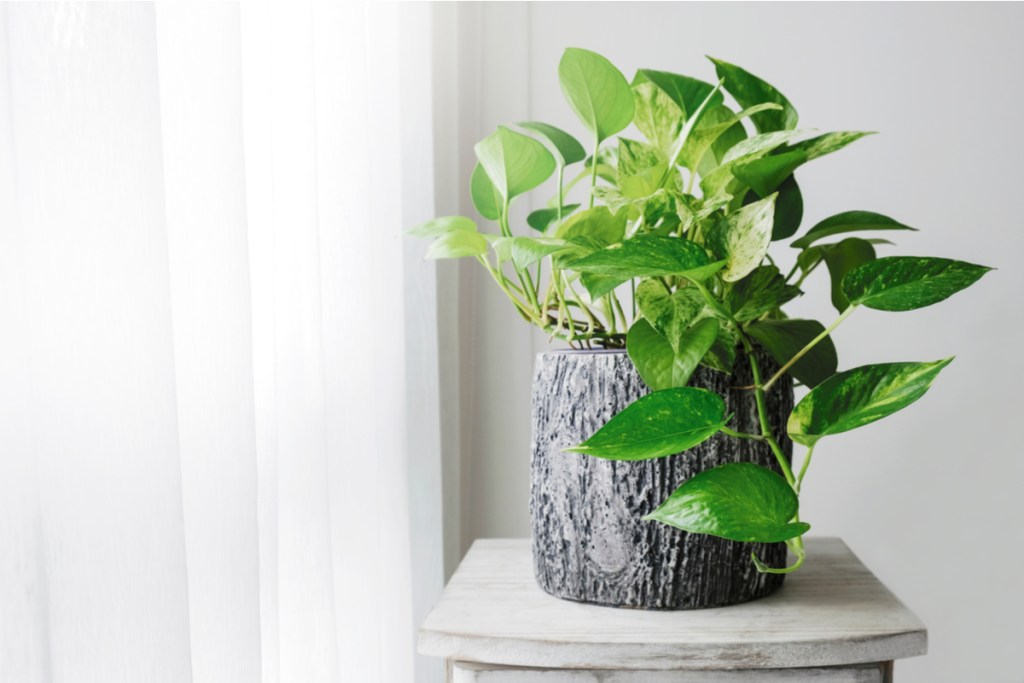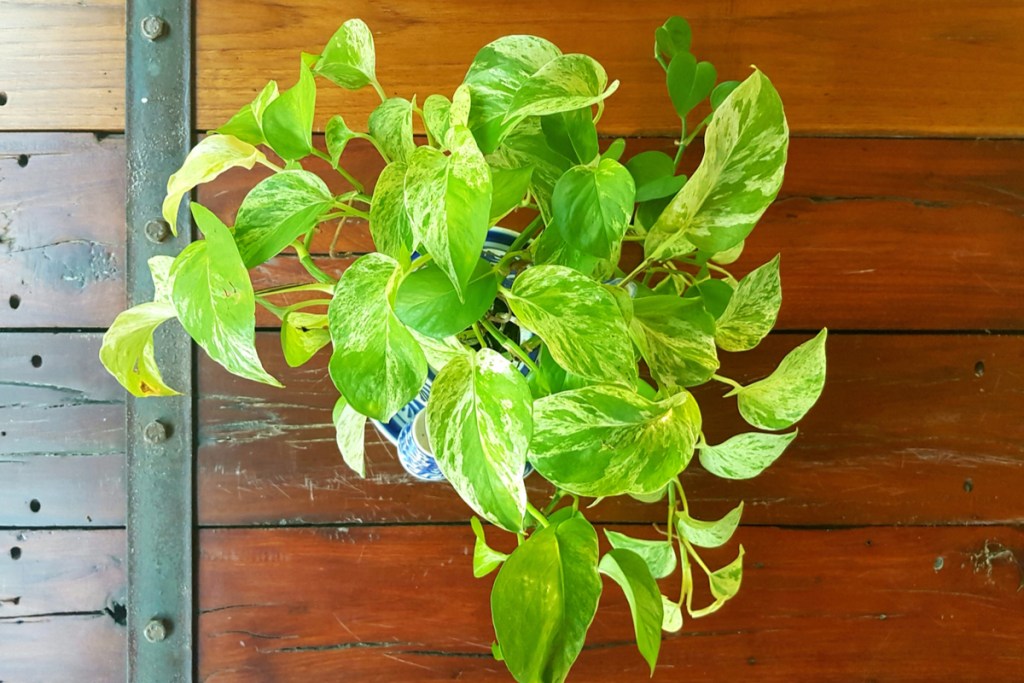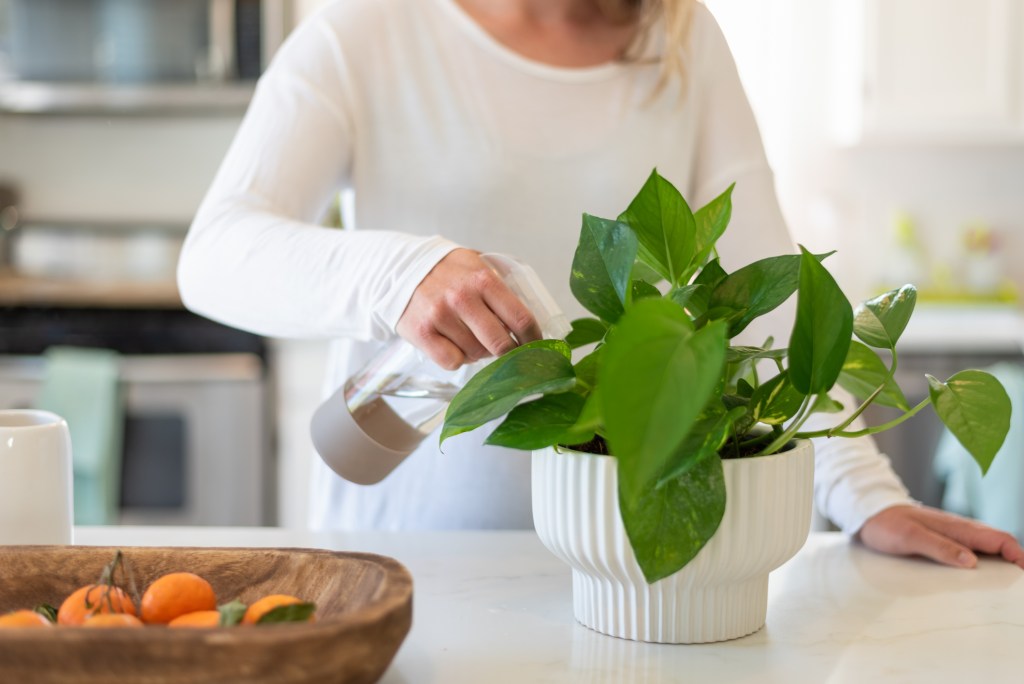When it comes to houseplants, the pothos has a reputation for being virtually unkillable. Its waxy, heart-shaped leaves manage to push out prolifically, even in less-than-ideal lighting and feeding conditions. And perhaps, on top of it all, the pothos is known to be a great companion for forgetful plant parents who might skip a watering or two. While the pothos plant doesn’t necessarily need consistent watering, that doesn’t mean it can thrive on no water. It should be no surprise that the pothos does best when watered properly. If you’re wondering how to best water your pothos for lush vines, read ahead.

What kind of soil does my pothos need?
To consider the watering needs of your pothos, we have to discuss its soil requirements. The pothos isn’t a very picky plant when it comes to a growing medium. You only want to make sure it’s in a well-draining and well-aerated potting mix. If your soil is too absorbent, this can easily drown your roots and lead to root rot. And without aeration, your soil can become too compact, which means the plant won’t get the water it needs.
A standard potting mix should be sufficient, but you can add orchid bark or cactus soil for drainage and perlite or vermiculite for aeration. Try not to use a cactus mix by itself, as your growing medium should hold on to some moisture. (Side note: you can actually grow pothos hydroponically for a very long time, so a potting mix isn’t strictly necessary.)
How do I know when my pothos needs water?
There are a few signs to look for to gauge when it’s time to water your pothos. The soil will feel dry to the touch, and your planter will feel light. The leaves, typically firm and waxy when watered well, will look a little droopy. As soon as you water your plant, the leaves should perk up within a few hours.
Be mindful that pothos leaves might also droop when overwatered — the wilting leaves may be yellow or have black spots on them. If damaged by overwatering, the leaves, unfortunately, won’t make a comeback. Remember, the pothos is always more forgiving of underwatering than overwatering.

How often should I water my pothos?
It’s entirely possible to keep a pothos happy watering it by feel without a set schedule. However, establishing a watering routine can be useful for checkups on your pothos. So you might ask yourself: Should I water my pothos once a week? Once every two weeks? There’s no set answer, but a consistent checkup cadence; say once a week, can be helpful.
How often to water pothos plants depends on a wide range of factors, from how much light you give it to what kind of soil it has. The best course of action is to gauge how long it takes to dry out and establish a cadence from there. The pothos likes to be watered after its soil dries out completely, which may be a week in the summer, but perhaps a few weeks in the winter. During the spring and summer, you can add a few pumps of all-purpose liquid fertilizer throughout every watering session or two.
How long should pothos be watered?
How long it takes to water your pothos depends on how big it is and what kind of watering method you use. A large plant will, of course, take longer to water than a small plant. If you’re simply pouring water from the top, it may take less time than bottom watering your plant.
After top watering, check for excess water in your cachepot or saucer — dump out this extra water to prevent root rot. If you’re bottom watering your plant, let it sit in a tray of water for about 15 to 20 minutes or whenever the top of the soil feels evenly moist. This latter method ensures you’re not overwatering your plant, but many people can get by with top watering. Whichever watering style you choose, make sure your pothos is thoroughly watered.

Do pothos like being misted?
If you want to mist your pothos, it may be because you want to amp up the humidity. The pothos is a tropical plant, so it appreciates extra humidity. That said, it’s very tolerant of low humidity. There’s no need to mist it or invest in a humidifier, but you can do so if you live in a dry environment.
Misting may also be helpful for the aerial roots. Over time, the pothos develops thick aerial roots above the soil surface. If you have pothos with aerial roots climbing up a pole, it may be useful to mist them to help them climb and uptake some nutrients.
It’s fact that misting is a topic of contention in the plant community. Some people believe it amps up humidity, while others think it can spread pathogens and pests without meaningfully increasing the humidity. For humidity-increasing alternatives, consider leaving your plant on a tray of wet pebbles or keeping a humidifier nearby.
Tolerant of neglect as it may be, the pothos plant flourishes best when watered correctly. Luckily, the pothos makes it clear when it needs watering and is often forgiving when underwatered. With an established checkup schedule for your plant, as well as a bit of fertilizer during the growing season, you’ll be able to enjoy this easy-care plant’s prolific vining leaves.
Editors' Recommendations
- Stunning Monstera plants that you should add to your indoor plant collection
- Beyond basil and cilantro, add these unique plants to your indoor herb garden
- 5 easy-care spider plant varieties perfect for any home garden
- Easy hoya plants to add to your indoor plant collection
- Do ZZ plants cause cancer? Here’s the definitive answer




